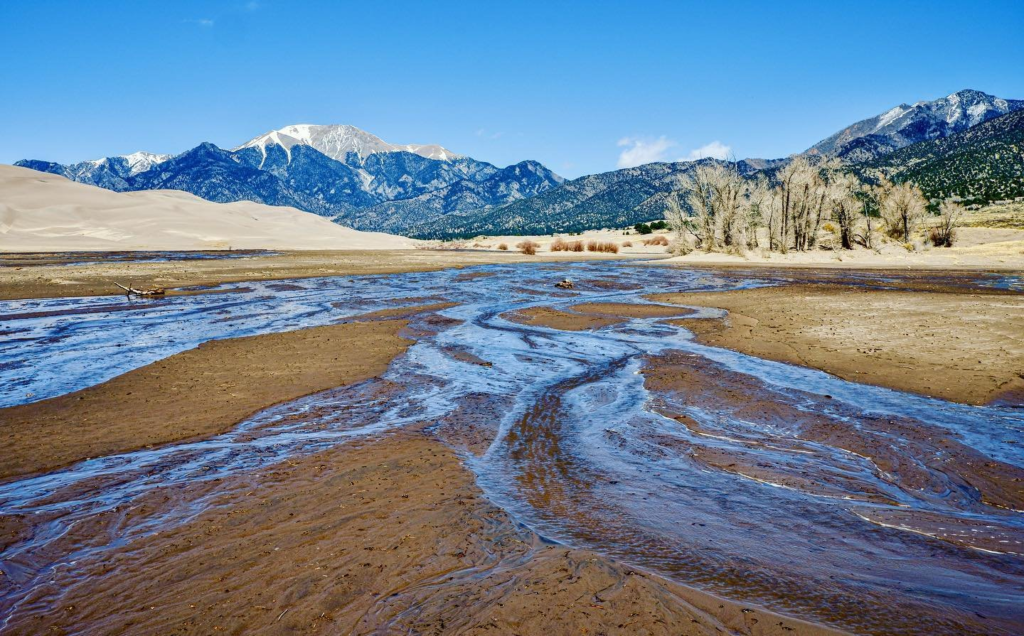Nestled in the shadow of the Sangre de Cristo mountains, Great Sand Dunes National Park is a mysterious and otherworldly landscape. Colorado is home to plenty of amazing scenery, but Great Sand Dunes might just be the most unique. If I asked you to picture sand dunes, I have a pretty good idea what that mental image looks like, and I can assure you it looks nothing like Great Sand Dunes National Park. Instead, picture North America’s tallest sand dunes, flanked by towering mountains, replete with alpine forests, and meadows brimming with wildflowers. Add in Medano Creek, flowing gently along the base of the dunes, and you start to have an accurate image of Great Sand Dunes National Park.

The presence of water is perhaps the most surprising aspect of Great Sand Dunes National Park. Medano Creek begins its journey as snowmelt high up in the Sangre De Cristo mountains. Trickling down the mountains, it eventually reaches the dunes, and plays a key role in shaping the landscape. The dunes are the result of constant interaction between wind, water, and sand. Persistent winds blow sand towards the mountains, where it slowly accumulates over time. Absent water, the sand would gradually invade the mountains, and the two landscapes would begin to blend together. Fortunately, Medano Creek is there to serve as the barrier between the two. Carrying away sand, and preserving the boundary between the dunes and the mountains.

While Medano Creek and the Sangre De Cristo mountains are both quite scenic, the park’s namesake dunes are its main attraction. Rising over 750 feet, and containing over 5 billion cubic meters of sand, they are truly a sight to see. I only had one afternoon to explore, and decided to climb to the top of “High Dune”. Peaking at 690 feet, High Dune is the most common destination for hikers exploring the dunes, and it’s easy to see why. It’s a real pain reaching the top, but the journey is well worth it, as you get to enjoy expansive views of the dunes, as well as the surrounding mountains.
The dunes sit an an elevation of nearly 8,000 feet, so hiking to the top is quite a workout. Ordinarily it wouldn’t be too bad, but if you’re not used to the elevation, you are in for a treat. Hiking to the top of High Dune was a great introduction to Great Sand Dunes National Park, but there was also plenty I didn’t get to see. The park definitely made an impression, and I will almost certainly be making a return trip in the future. You can see quite a bit of the park in a single day, but ideally you’d take 2 or 3 days to explore.
https://www.nps.gov/grsa/planyourvisit/hiking.htm

The park is a bit out of the way, located 4 hours south of Denver, and 3 hours north of Santa Fe. But in my opinion, Great Sand Dunes National Park is well worth the trip. It’s a one of a kind landscape, and also provides an experience that’s in many ways superior to some more popular national parks. You’re not going to encounter huge crowds here, and the dunes are large enough where you can enjoy some solitude. The dunes are also a bit of a blank canvas. There are no official trails, so it’s completely up to you to explore how ever you like. So if you ever get the chance, get out there and explore Great Sand Dunes National Park. It’s one of Colorado’s great hidden treasures, and you might be surprised how beautiful it is.
